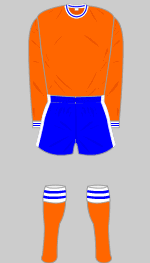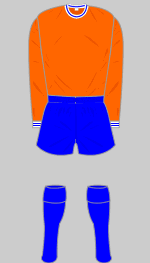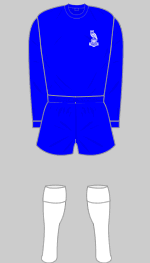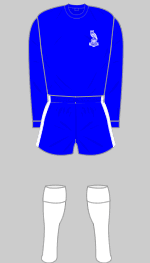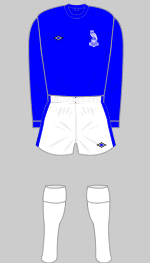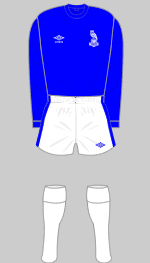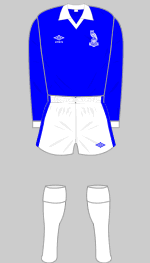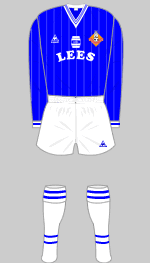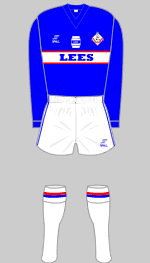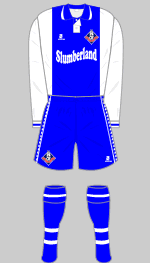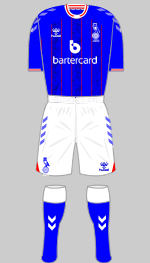



Oldham
Athletic
Formed 1894
Replaced Burslem Port Vale in Division Two 1907
Relegated to the National League 2022
Kit History
Pine Villa
1894
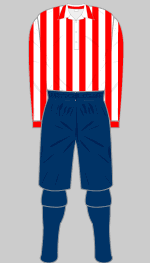
circa 1895 a
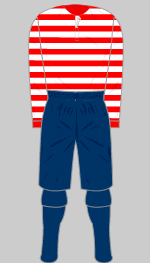
circa 1897 a
Oldham Athletic
1898
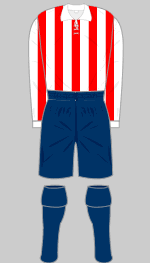
1905-1906 u
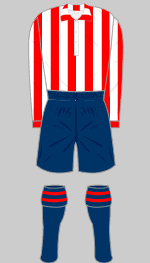
1906-1907 s
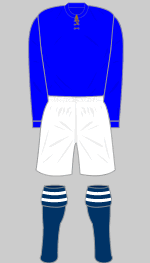
1907-1908 D
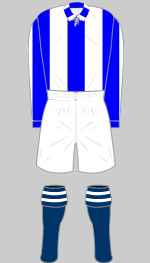
1910-1911 w
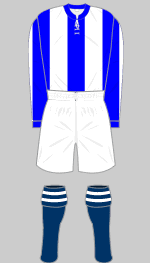
1912-1914 m n s w
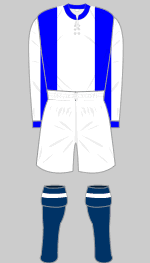
1914-1917 w y
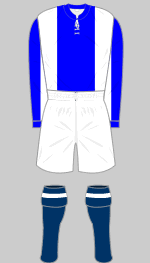
1919-1923 y C
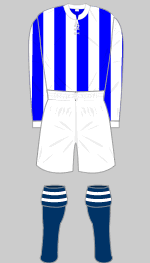
1922-1923 w
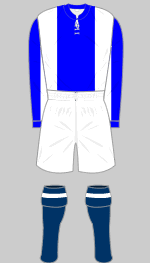
1923-1935 b n s
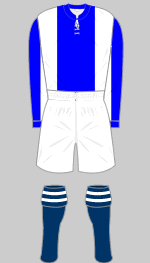
1935-1936 s
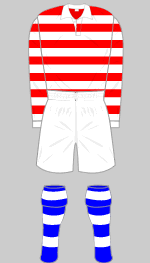
1946-1948 q
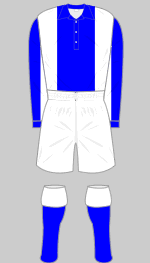
1948-1950 s
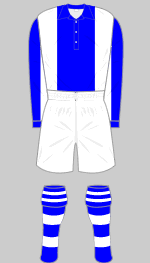
1950-1951 c
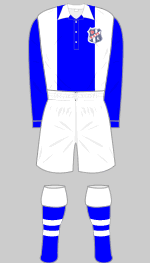
1951-1954 c d s w
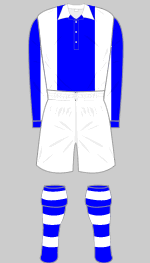
1954-1956 e s
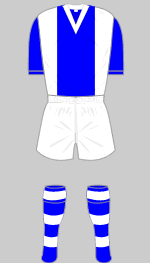
1956-1957 s
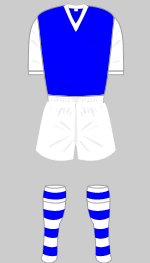
1957-1959 v z
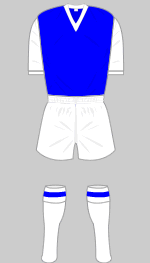
1959-1960 v
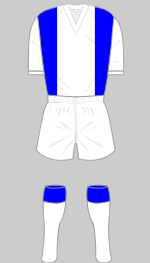
1960-1961 s
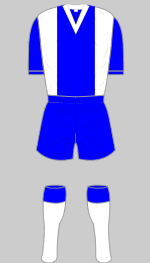
1961-1962 w
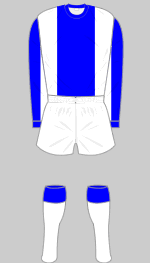
1962-1966 f s
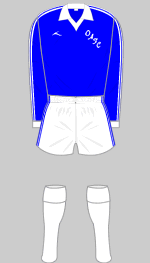
26 February 1977 B
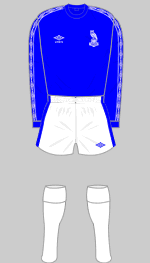
1977-1979 p
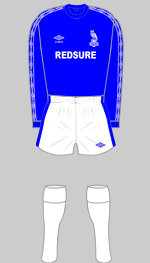
1979-1981 b o r
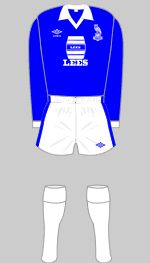
1982-1983 t
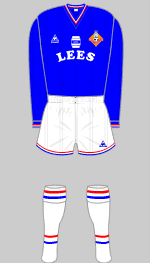
1984-1985 i r s
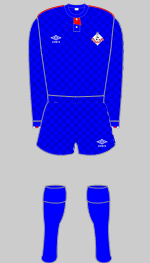
Aug-Dec 1987 A
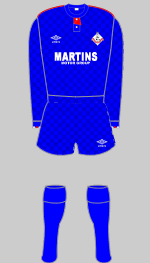
Jan-May 1988 t A
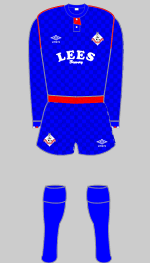
1988-1989 o t
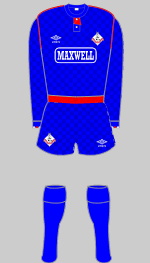
1988-1989 A
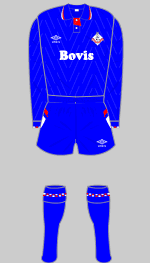
1989-1991 b k r

1991-1992 b r
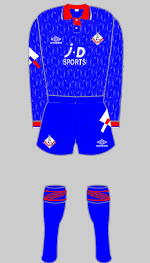
1992-1993 b r
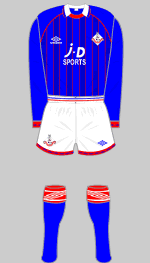
1993-1995 b r

1995-1996 b r
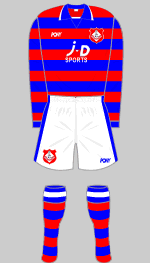
1996-1998 b
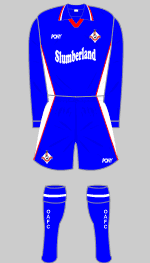
1998-2000 b
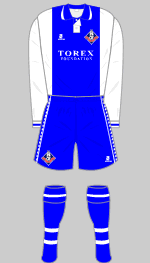
2001-2002 b x

2002-2003 b r x
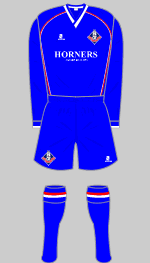
2003-2004 b r x
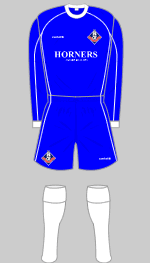
2004-2005 l
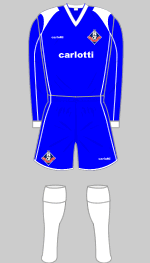
2005-2006 j

2006-2007 j
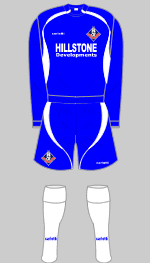
2007-2008 j
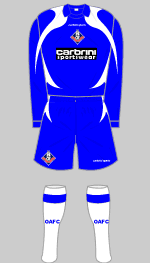
2008-2010 j
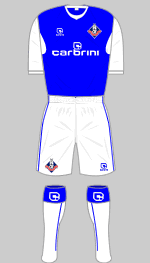
2010-2012 j
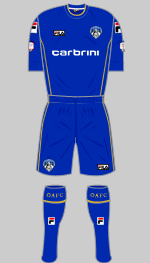
2012-2013 j
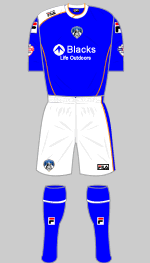
2013-2014 j
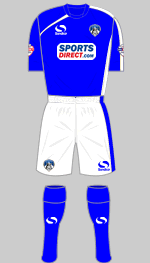
2014-2015 j
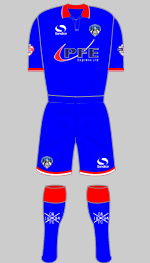
2015-2016 j
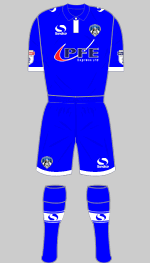
2016-2017 j
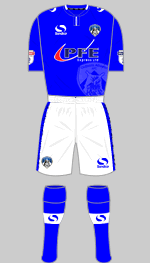
2017-2018 j
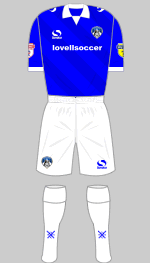
2018-2019 j
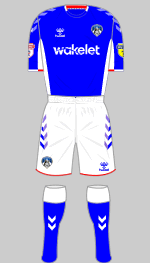
2019-2020 j
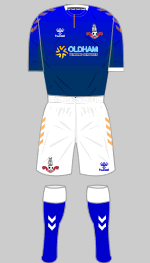
2020-2021 j
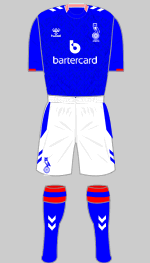
2022-2023 j
Background
 Formed as Pine Villa by John
Garland and his son, Fred, at a meeting in the Featherstall & Junction
Hotel, within 16 years the club would graduate from local competition
at junior level to the top of the Football League.
Formed as Pine Villa by John
Garland and his son, Fred, at a meeting in the Featherstall & Junction
Hotel, within 16 years the club would graduate from local competition
at junior level to the top of the Football League.
Having become Oldham Athletic in 1898, “The Latics” played their first game in the Manchester Alliance League in 1899 against Berry’s Blacking Works Second XI. Having finished as runners-up, the club moved up to the Manchester League the following year. In 1904 they graduated to senior level and became members of the Lancashire Combination B Division, winning promotion at the first attempt. An ambitious committee decided to form a limited company the following season and the campaign to join the Football League began.
After missing out on election by a single vote in 1906, they won the Combination title and reached the second round proper of the FA Cup only to be disappointed at the Football League AGM in June 1907. After the vote was taken, however, Burslem Port Vale resigned from the League and Oldham, as the strongest of the unsuccessful candidates, were invited to take their place. On their election, Oldham switched from their previous red and white stripes to plain blue jerseys.
After only three seasons, the Latics won promotion to Division One and in the final season before the League was suspended, they finished as runners-up in 1915, only one point behind Everton. When competition resumed after the First World War, Oldham’s pre-war team was gone and, after four seasons of struggle, they were relegated to Division Two. In 1935, now wearing the distinctive broad blue and white striped shirts that would become their signature kit, Oldham sank into Division Three (North).
Immediately after the Second World War, Oldham
turned out in red and white hooped jerseys borrowed from 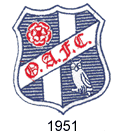 their neighbours,
Oldham RLFC, presumably because the traditional shirts were not available.
their neighbours,
Oldham RLFC, presumably because the traditional shirts were not available.
A badge appeared on the team's shirts between 1951 and 1954. The inclusion of an owl is a play on words and comes from the Oldham coat of arms: locals call the town "Owldham." A red Lancashire rose appears in the upper left quarter while the signature broad white stripe of their shirts is offset in upper and lower sections.
In 1953 The Latics returned to Division Two only to be relegated immediately
and in 1959 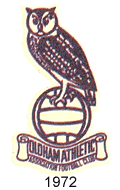 and 1960 the club suffered the humiliation of having to apply
for re-election to the Fourth Division twice in succession.
and 1960 the club suffered the humiliation of having to apply
for re-election to the Fourth Division twice in succession.
In 1963 the club’s fortunes improved with promotion to Division Three. Two years later the distinctive blue and white shirts were dropped in favour of a garish orange and blue outfit. After spending four seasons in the Fourth Division, Oldham won the title in 1971.
In 1972 they adopted a simple blue and white strip along with a simplified club crest featuring an owl on a football. They became
champions of the Third Division and so returned to Division Two. Against
the odds, the Latics not only survived at this level, 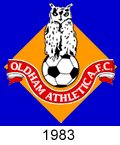 they began to thrive
under the management of Joe Royle, formerly of Everton.
they began to thrive
under the management of Joe Royle, formerly of Everton.
The introduction
of red trim in the mid 1980s marked the beginning of a period of success. The crest was updated in 1983 and originally featured an orange diamond in the background, a reference to the club colours worn in the 1960s. This was changed to 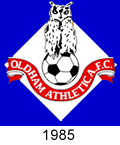 white after a couple of seasons.
white after a couple of seasons.
In 1990 the club reached the FA Cup semi-finals and were League Cup finalists.
In 1991, to much astonishment, they won the Second Division championship
and were back in Division One after an absence of 64 years.
In the 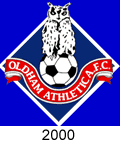 face of competition from the two big Manchester clubs, Oldham did
well to stay in the top division for three seasons but relegation in 1994
was widely thought to have been inevitable. Immediately afterwards Royle
left to rejoin Everton as manager and in 1997, the Latics were relegated
to Nationwide Division Two (the old Third Division).
face of competition from the two big Manchester clubs, Oldham did
well to stay in the top division for three seasons but relegation in 1994
was widely thought to have been inevitable. Immediately afterwards Royle
left to rejoin Everton as manager and in 1997, the Latics were relegated
to Nationwide Division Two (the old Third Division).
After 2000 the club crest generally appeared against a dark blue 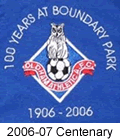 diamond outlined in white.
diamond outlined in white.
The club became insolvent in 2003-04 but was rescued by a consortium of British businessmen based in the United States who reformed it as Oldham 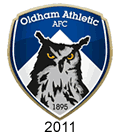 Athletic (2004) Association Football Club Limited.
Athletic (2004) Association Football Club Limited.
In the 2006-07 season the words "100 Years at Boundary Park 1906-2006" were embroidered round the badge on the home shirts.
For the 2011-12 season the club introduced a new crest. This appeared only on the away kit that season and was added to the home kit the following 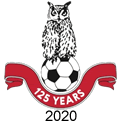 year.
year.
In 2020 the club celebrated its 125th birthday and fans were consulted to decide on a design for the anniversary crest and the new strips. 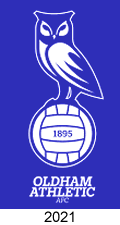 Unsurprisigly supporters preferred the old owl-and-football badge and opted for a graded blue shirt with tangerine accents. The change shirt was modelled on the red and white striped tops of the original Pine Villa club.
Unsurprisigly supporters preferred the old owl-and-football badge and opted for a graded blue shirt with tangerine accents. The change shirt was modelled on the red and white striped tops of the original Pine Villa club.
Supporters were again consulted ahead of the 2021-22 season and invited to choose from three options for a new crest, each of which was based on a historical badge. These included the original 1951 crest and the 1983 version but the winner was an updated version of the 1972 owl-and-football design.
The rebranding exercise failed to translate into better performances. The Latics had a miserable season and finished in 23rd place, ending 115 years of continuous membership of the Football League. It was the first time that a former Premier League team had dropped into non-league competition. Following relegation the club's supporters' trust started a campaign for a community takeover. The unpopular owner, Abdallah Lemsagam eventually agreed to sell his stake and in June 2022 it was announced that local businessman, Frank Rothwell, had bought the club which was also in the advanced stages of buying back Boundary Park from former owner, Simon Blitz.
Sources
- (a) Club Colours (Bob Bickerton 1998)
- (b) empics
- (c) Football Focus
- (d) Association of Football Statisticians
- (e) York City FC - Images of Sport (David Batters)
- (f) Crewe Alexandra FC (Images of Sport) Harold Finch 2001
- (g) Bob and 1970-71 Footballers
- (h) Football Cards
- (i) Premier Shirts
- (j) Oldham Athletic Official Website
- (k) Football Heroes
- (l) Manchester On Line
- (k) The Mighty Mighty Whites
- (m) Association of Football Statisticians - provided by Pete Wyatt
- (n) Pete's Picture Palace
- (o) Premier Shirts
- (p) Alick Milne
- (q) Peter Berry
- (r) David King
- (s) Greger Lindberg
- (t) David Sowerby
- (u) Shane Holborne
- (v) Robin Hardman
- (w) Keith Ellis (HFK Research Associate)
- (x) museumdelatique.com
- (y) Mark Oliver
- (z) Grandad's Football Blog
- (A) Tim Selby
- (B) Tony Sealey
- (C) Nik Yeomans
- (D) ebay
Crests are the property of Oldham Athletic FC.
